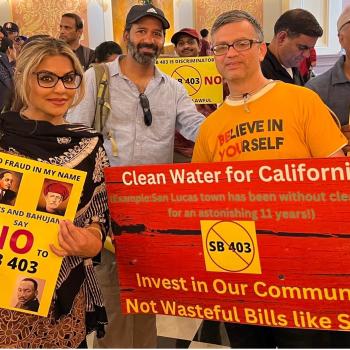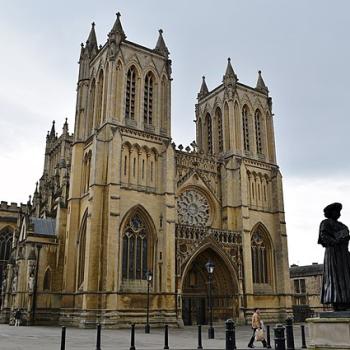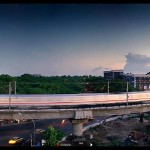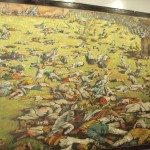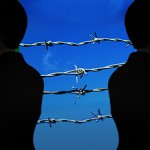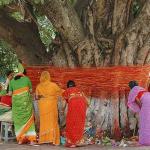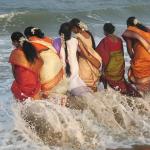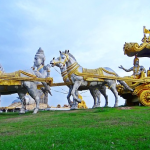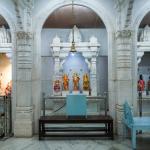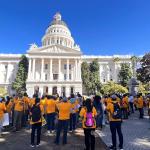Balochistan is on fire. Because Musharraf’s Army killed Bugti – the Baloch leader – and his closest men. Is this the beginning of secession of Balochistan? I think so. Is it going towards the Bangladesh direction? Maybe. Should India help the Balochs? Heck yes! Why? Because really speaking I am sick and tired of Pakistan’s many games. There are only so many ways to deal with it. One of the best way, that a pacifist friend of mine once articulated was – just break them into smaller countries so they keep fighting amongst themselves and wont bother about us! I think he was very right!! The time to fight a full fledged war is gone. But Pak would not stop from creating terrorist attacks on India … ever! But there HAS to be a way to blunt its ability to keep “bleeding” India because it cannot rise anyway!
Here is what my favorite columnist B. Raman describes the events in such precise details (I am sure the Pakistani media will surpress most of the details):
Thirty six other freedom-fighters belonging to the Bugti and Marri tribes were killed in a three-day operation which began August 24 in the Bhambore Hills, an area between the towns of Kohlu and Dera Bugti. According to Pakistani media reports, Balach Marri, who was believed to be the chief of the Balochistan Liberation Army (BLA), and Nawab Bugti’s grandsons Brahamdagh and Mir Ali Bugti were among those killed.
Reliable sources in Balochistan said the Pakistan Army, using modern communication monitoring sets given by the US for pinpointing the location of Osama bin Laden, Ayman al-Zawahiri and other remnants of the Al Qaeda in Pakistani territory, managed to pinpoint the cave in which Nawab Bugti and his followers had taken shelter for more than a year to escape being killed by the Pakistani military.
The Air Force went into action on August 24 and 25 and repeatedly bombed these caves. Thereafter, special commando units of the Pakistan Army, which had been moved into Balochistan from the North Waziristan area, went into the area and raided the caves. The survivors of the air strikes put up a stiff resistance before they were overcome by the army commandos. Before dying, the freedom fighters managed to kill 40 army commandos, including six officers.
The plans for a decapitation strike against Nawab Akbar Khan Bugti and the commander of the BLA had been drawn up by Air Vice Marshal Shehzad Aslam Chaudhry last year when he was the Deputy Chief of Air Staff (Operations) last year, and approved by General Pervez Musharraf. Chaudhry has since retired and has been posted as Pakistan’s High Commissioner to Sri Lanka to help the Sri Lankan government in its operations against the Liberation Tigers of Tamil Eelam (LTTE).
However, these plans could not be implemented due to lack of precise intelligence regarding the location of the hideouts of Nawab Bugti. Moreover, the increasing activities of the Al Qaeda in North Wazaristan came in the way of the Pakistani military shifting reinforcements to Balochistan. Reported expression of concern by American officials over the misuse of the equipment, including helicopter gunships, given by them for use against Al Qaeda, in the operations against the Baloch freedom fighters also came in the way of the immediate implementation of the plans.
Two months ago, the Pakistan Army reached a ceasefire agreement with the remnants of the Al Qaeda and the Taliban in North Waziristan. Under this agreement, the jihadis and their local tribal supporters agreed to suspend their operations against the Pakistani security forces. In return, the latter agreed not to interfere with their raids into Afghanistan.
This ceasefire agreement enabled the Pakistan Army to shift its forces, helicopters and communication equipment to Balochistan for operations against the leaders of the Baloch freedom struggle.
Well-informed sources in Balochistan say that the praise showered on General Musharraf recently by the US and the UK for his projected, but not yet proved role in helping the British Police to thwart a jihadi plan to blow up 10 US-bound planes emboldened Musharraf to launch this operation against the Baloch freedom fighters. He felt that in view of this praise, US and British officials were unlikely to take a strong stand against his operations in Balochistan.
The successful decapitation strike launched by the Pakistan Air Force and Army is a major tragedy for the Baloch freedom fighters, but they are not strangers to tragedies. This would only further strengthen their resolve to step up their independence struggle against the Punjabi-military colonisation of Balochistan, with the alleged assistance of China.
Tha Balochs have always been well disposed towards the US. Their anger over the misuse of the US equipment given for anti-Al Qaeda operations by Musharraf for killing the Baloch leaders is unlikely to turn them against the US. However, the anti-Chinese anger in Balochistan is likely to increase further.
There are already reports of widespread violence in Balochistan in the wake of the martyrdom of Nawab Bugti and other brave freedom fighters, resulting in the imposition of a curfew. The Baloch freedom struggle has entered a new phase. The Pakistan Army and Air Force have shown that they have had no lessons to learn from the consequences of the similar policies followed by them in the pre-1971 East Pakistan.
In this hour of national tragedy, the Balochs have re-dedicated themselves to their independence struggle and resolved to keep up their struggle till freedom becomes a reality. The Balochs, like the Sindhis, the Mohajirs and large sections of the Pashtuns, have always been the traditional friends and well-wishers of India.
The Government of India should not hesitate to condemn the Pakistani military’s massacre of Nawab Bugti and other Baloch freedom fighters in the strongest terms. Whatever be the attitude of the Indian policymakers, the people of India will stand by the Balochs in their hour of tragedy and re-dedication.
Secessionist movements are not new to India too. Pakistan has done what it could possibly do in India in Kashmir, Punjab, Northeast, and elsewhere to create those militants and arm them much to India’s chagrin! What is the right way to deal with such movements? Col. Anil Athale, another very sharp analyst, describes:
The truth is that it is well understood in India that quelling an internal unrest is a long haul, and massive force cannot be used indiscriminately. Do the Pakistanis (and their sympathisers in India) realise that in this brutality there is very little to choose between Israel’s attacks on Lebanon or Palestine and Pakistan?
The Indian approach towards the leaders of insurrection has also been very different, be it the late Angami Zapu Phizo of Nagaland, Laldenga of the Mizo National Front or even Ahmed Shah Geelani of Kashmir’s pro-Pak Jamaat-e-Islami.
As a matter of record, Geelani got a lease of life when he was treated for cancer in Mumbai’s Tata Memorial Centre (at the Indian taxpayers expense) a few years ago. That he continues to spew venom at India and Indians speaks volumes of his character.
Indians never went in after individuals. Maybe it has something to do with the fact that Indians would rather follow the British model of Malaya (under Sir Gerald Templer who successfully dealt with the Malayan communist insurgency).
The Pakistani army, under the heavy influence of the Americans, is more prone to follow the Vietnam model of body count and search and destroy missions.
Obviously the Pakistani army does not want to learn from its own mistakes in Bangladesh or its neighbour’s success. When Musharraf calls it a ‘great victory’ he betrays a ‘company commander’ mentality (using deductive military logic of tactics for complex strategic and politico-military issues). With this one event it seems Musharraf has used up his nine lives and his physical or political continuity is in grave doubt.



